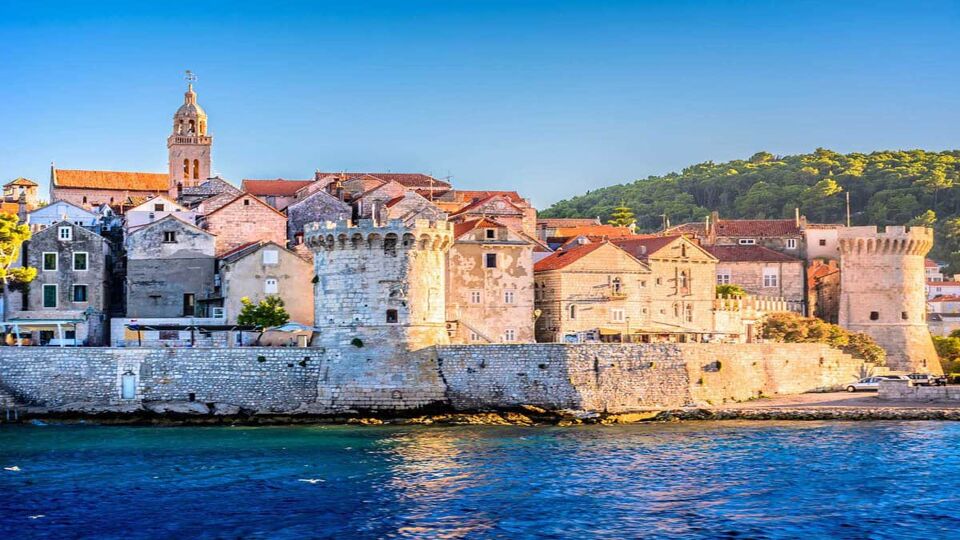Dubrovnik
Price €1,185
Min age 0
Rating 4.5 / 5 [24 ratings]
Tour supplied by:
Bucket list destination:
Dalmatian Islands, Dalmatia, Croatia

The Dalmatian Islands feel like the Mediterranean before it was overrun by tourist masses – an unspoilt paradise of pine-scented breezes, crystal-clear waters, wild nature and centuries-old Venetian-era harbour towns.
The archipelago stretches along the Adriatic coast and includes a thousand-plus islands. Most are uninhabited and protected as national park, and the few populated ones are remarkably well preserved, with picturesque architecture and historical traces of Eastern Europe. It’s a historical region – once an important province within the Roman Empire.
For travellers who love the sea and mountains, adventure sports and medieval buildings, the Dalmatian archipelago is a great find – and still, thankfully, unspoilt.
Backed by the rugged Dinaric Alps, the Dalmatian coastline is lapped by the deep blue Adriatic Sea and dotted with rocky, pine-scented islands that stretch out along the coast between Split and Dubrovnik.
The three big coastal hubs are Dubrovnik, in the far south, Split, roughly in the middle of the coastline, and Zadar, rurther north.
Dubrovnik’s the departure point for the quiet Elaphiti islands, while Split has links to all of the most popular islands including Hvar, Korcula, Brac, Krk and Vis.
Hvar is by far the most stylish of all Croatia’s islands, with chic hotels and a moneyed yachting crowd that sail over from Split.
Brac has the country’s best beach; along with Krk it’s an excellent choice for families, while Korcula – with its lovely old town – and the far distant Vis are ideal for couples.
Our selection of the best Viator tours of this destination, plus helpful tickets and transfers
Dubrovnik
Price €1,185
Min age 0
Rating 4.5 / 5 [24 ratings]
Tour supplied by:
June and September are the best times to go, offering great weather and warm water for swimming, without the hordes. If you’re sailing, there are fewer boats – more chance of privacy in those secret coves and beaches – and better winds.
High season (July and August) is perfect for visitors who want to mingle with the crowds and enjoy a buzzing nightlife.
Many hotels, restaurants and activities are closed between November and April, and the water is too cold for swimming.
Visitors to the islands land in either Split or Dubrovnik international airports, then take a taxi to the harbours.
There you’ll pick up your private charter, or catch a local Jadrolinija ferry or catamaran to the island of your choice. There are regular departures; see the ferry website for schedules.
The best way to explore the Dalmatian Islands (and the mainland coast) is by private yacht. Most charter companies are based in Split and offer one-week rentals (skipper optional) – enough time to complete a circuit that takes in Brač, Hvar, Korcula and Vis.
Public transport on the islands is cheap and efficient: the islands are served by regular ferries and catamarans, and most towns and even villages are connected by buses. Taxis are scarce.
Hiring a car, while not strictly necessary, will nevertheless give you more freedom to explore the islands. If you plan to take a vehicle on a ferry during peak season (July to August), you should book well in advance on the ferry website. Foot passengers don’t need to make reservations.
A fine choice for a first visit to Dalmatia, Hvar Town on the island of Hvar is home to the region’s most modern and luxurious hotels. There are also plenty of beaches, and the car-free historic centre offers sophisticated seafood eateries and glamorous nightlife.
Bol, on the island of Brac, is more geared towards package tours and has several vast modern hotels – its main draw is Zlatni Rat beach, with excellent watersports facilities.
Korcula Town on Korcula offers plenty of historic interest, but many of its hotels are rather dated.
Surrey, United Kingdom (UK)
This well-run Croatia sailing specialist, set up by Helle and Grant Seuren, offers a range of cruising and yachting options in the Dalmatian Islands, on both organised tours and private charters.